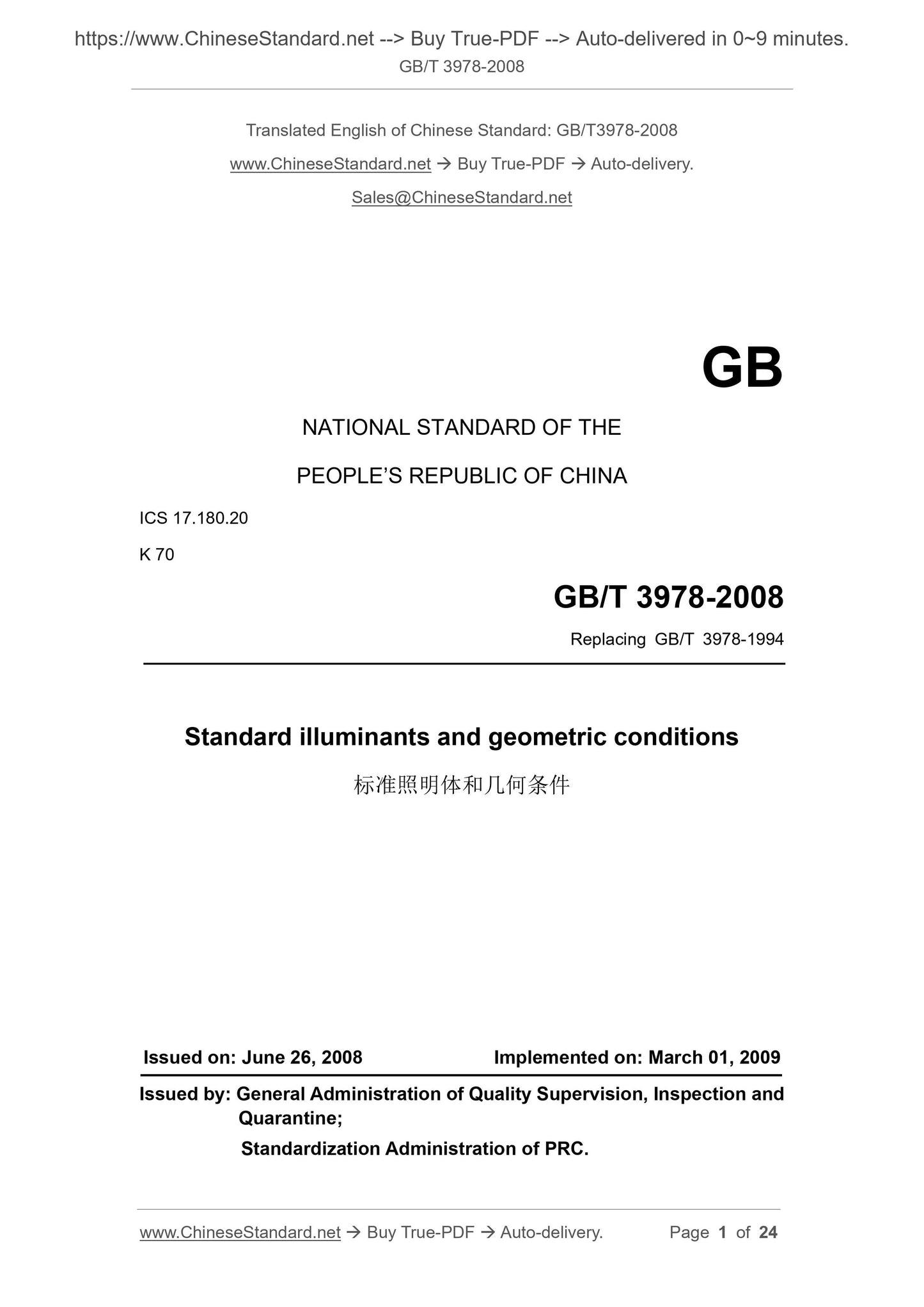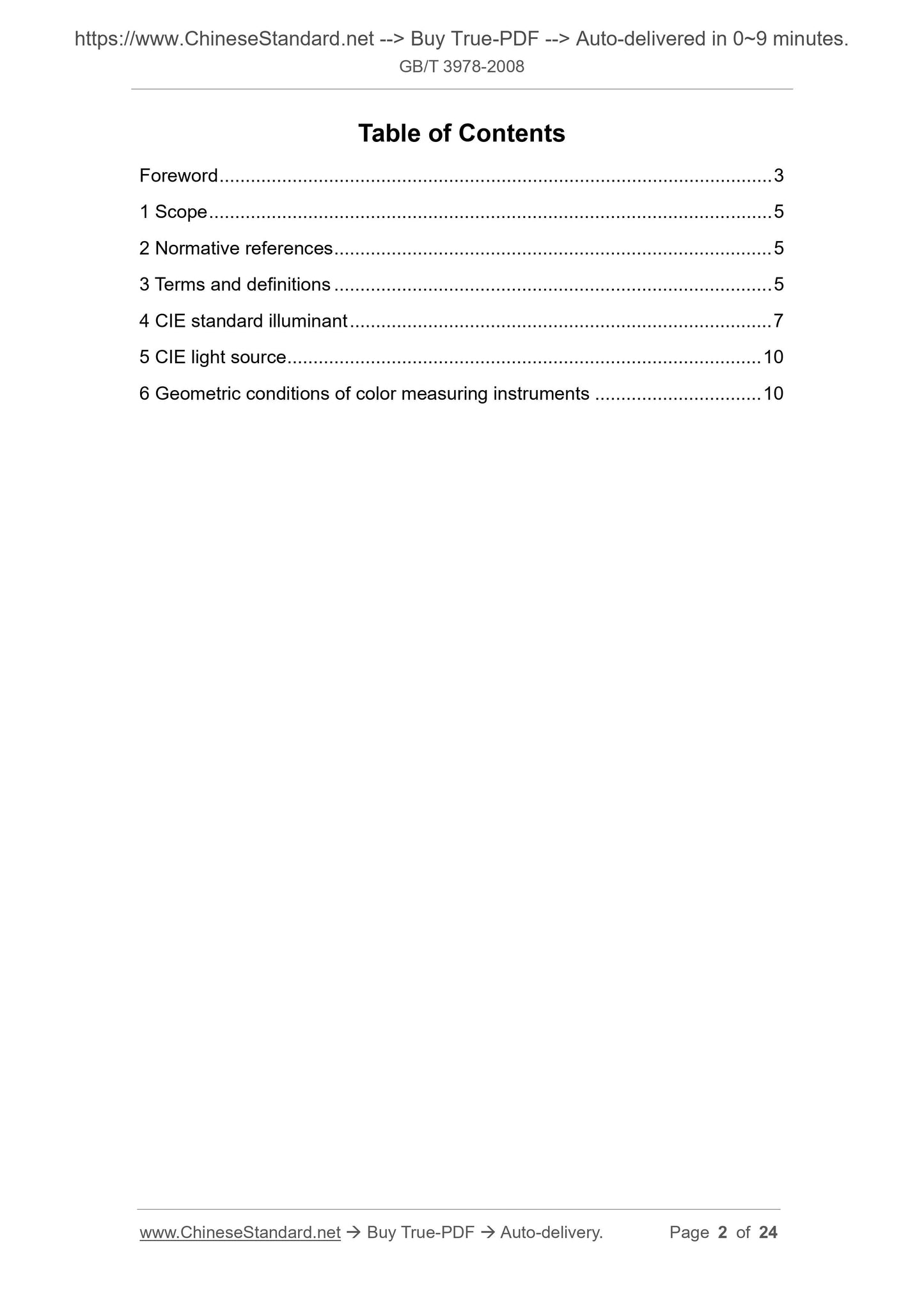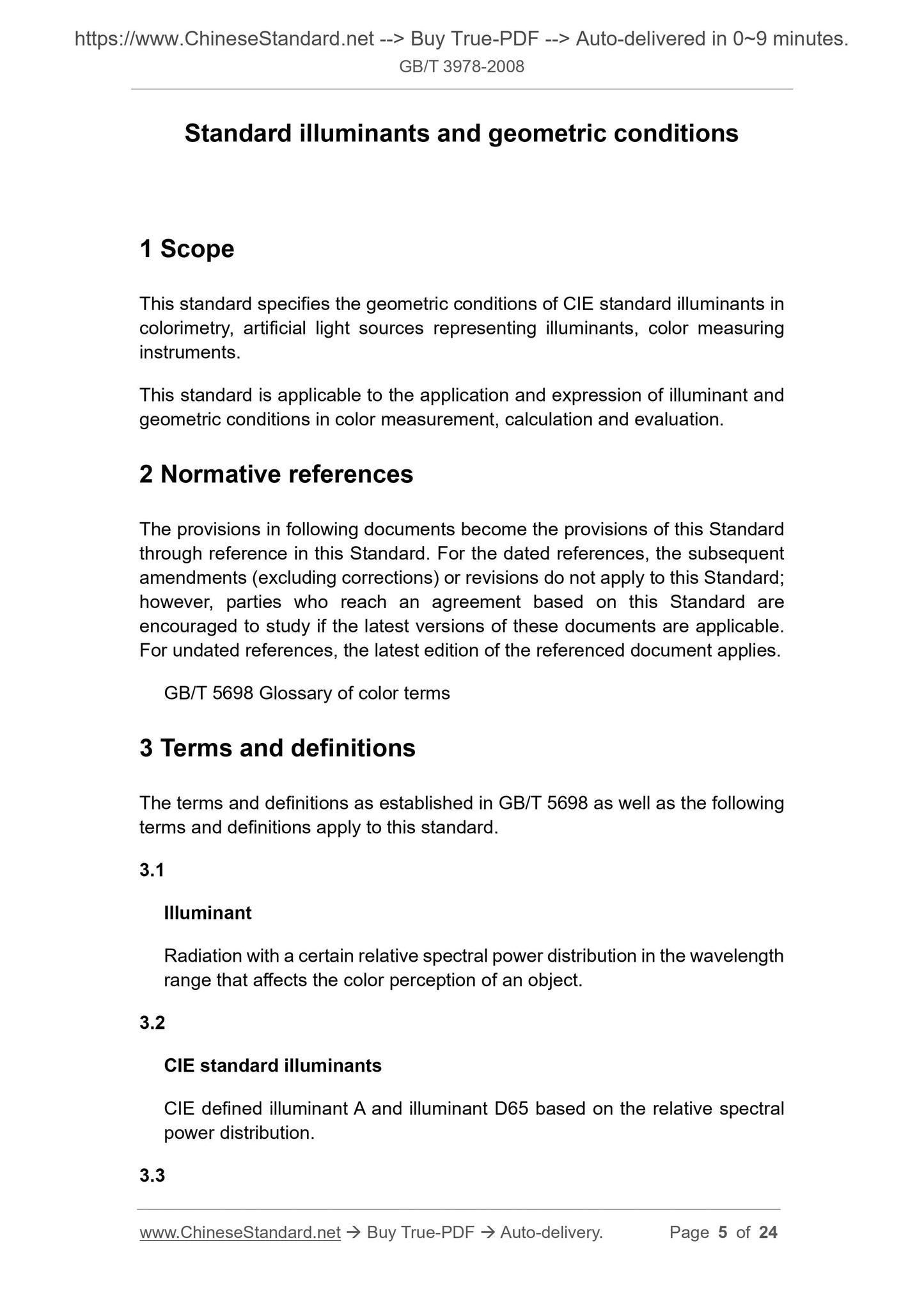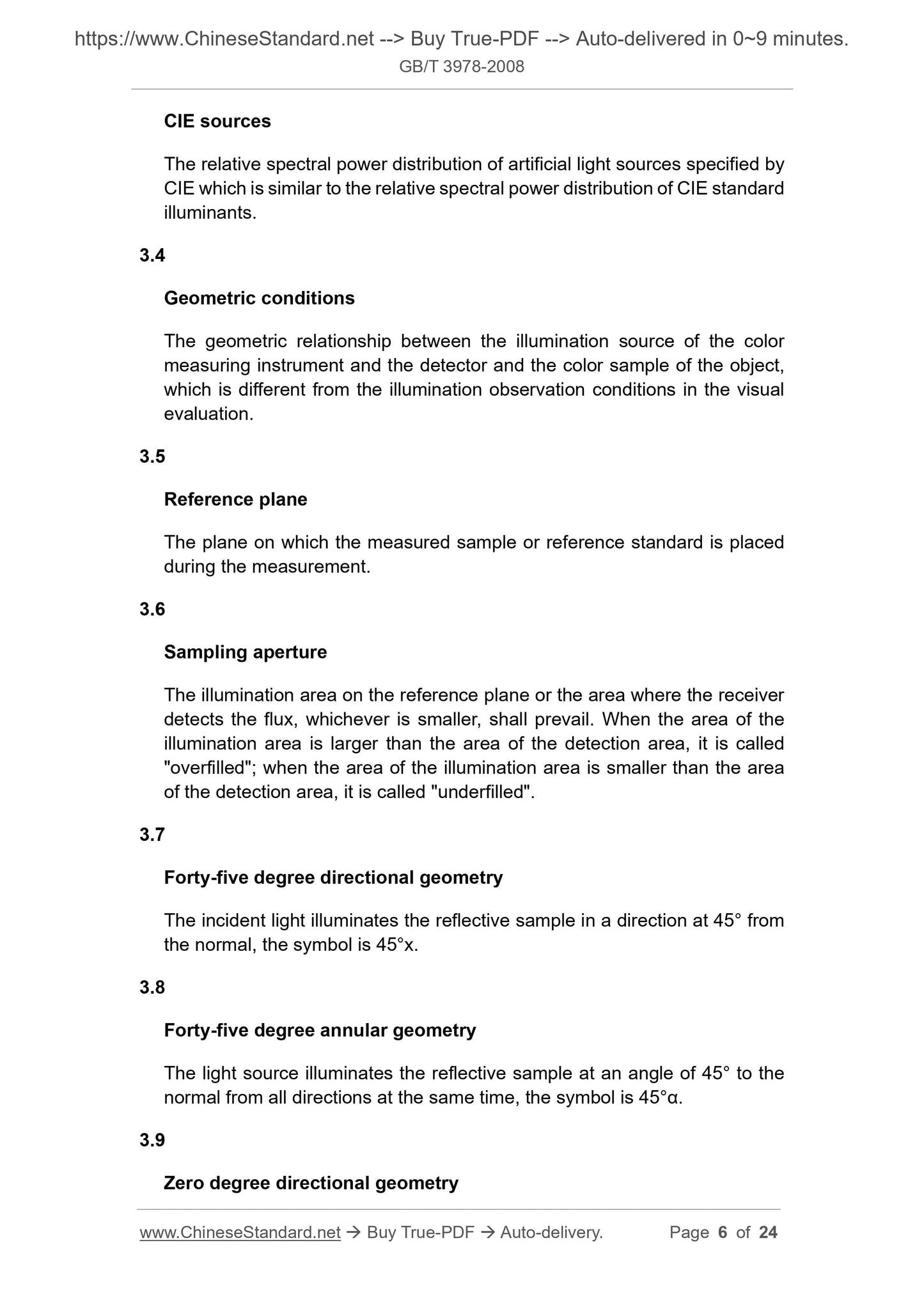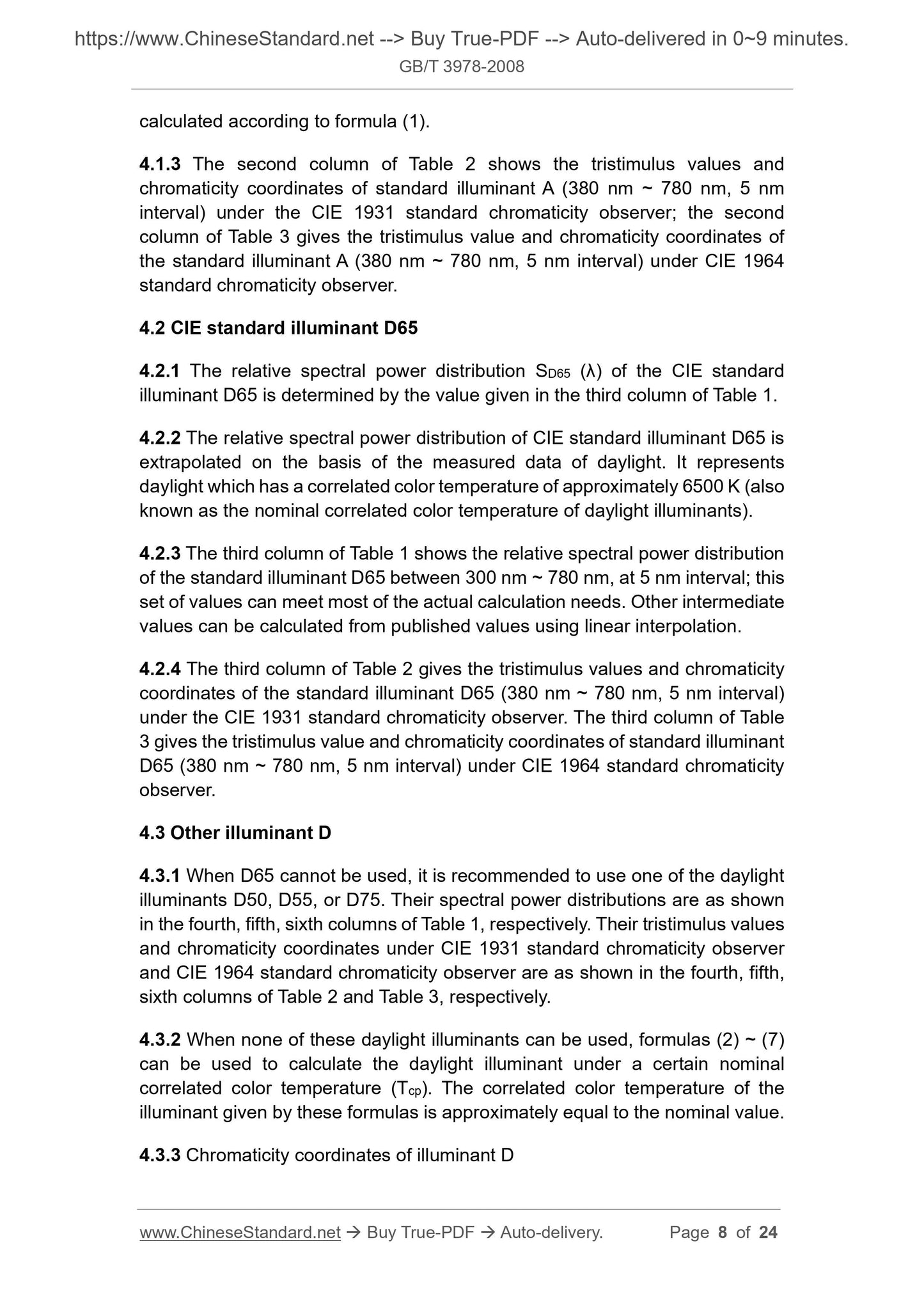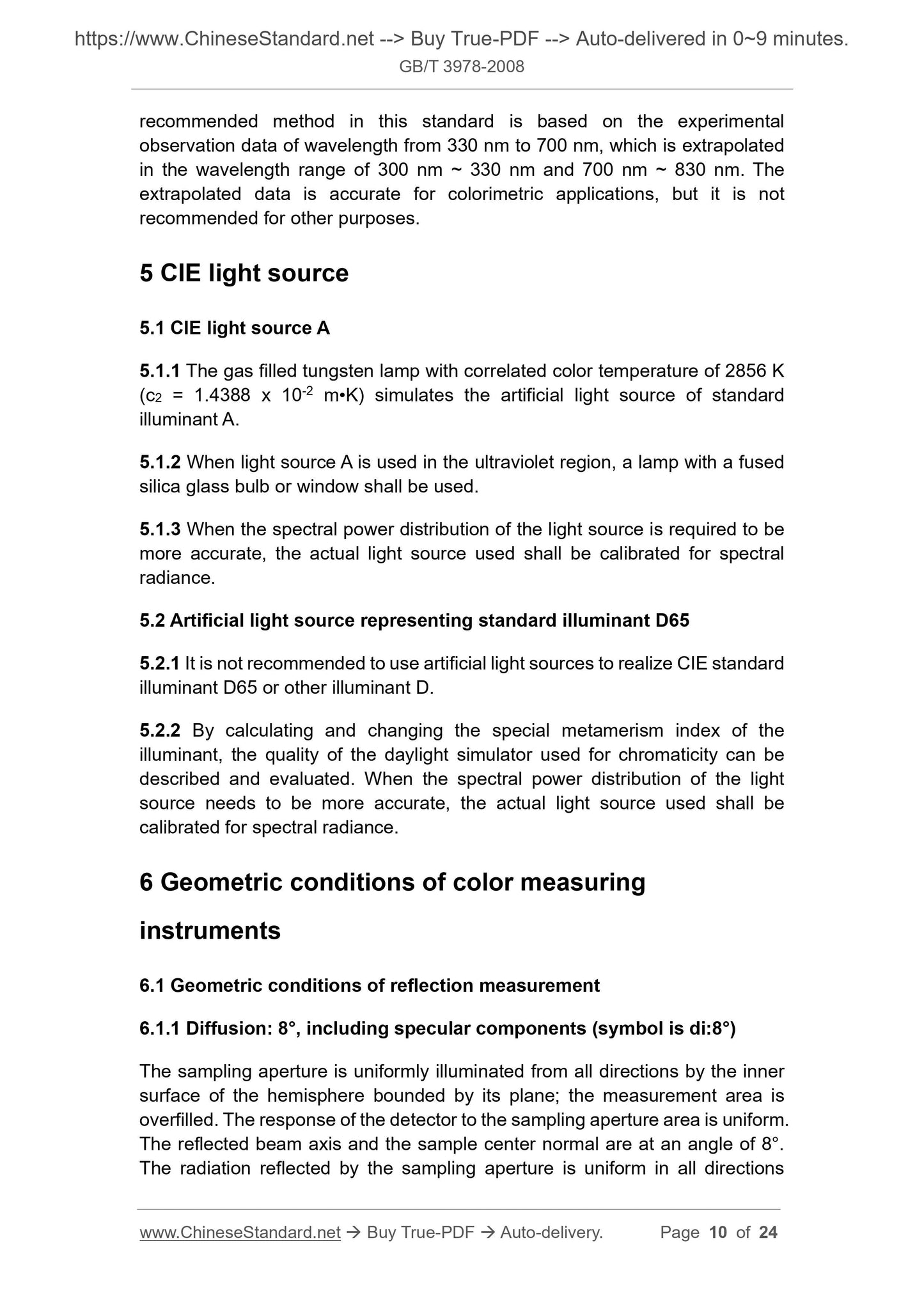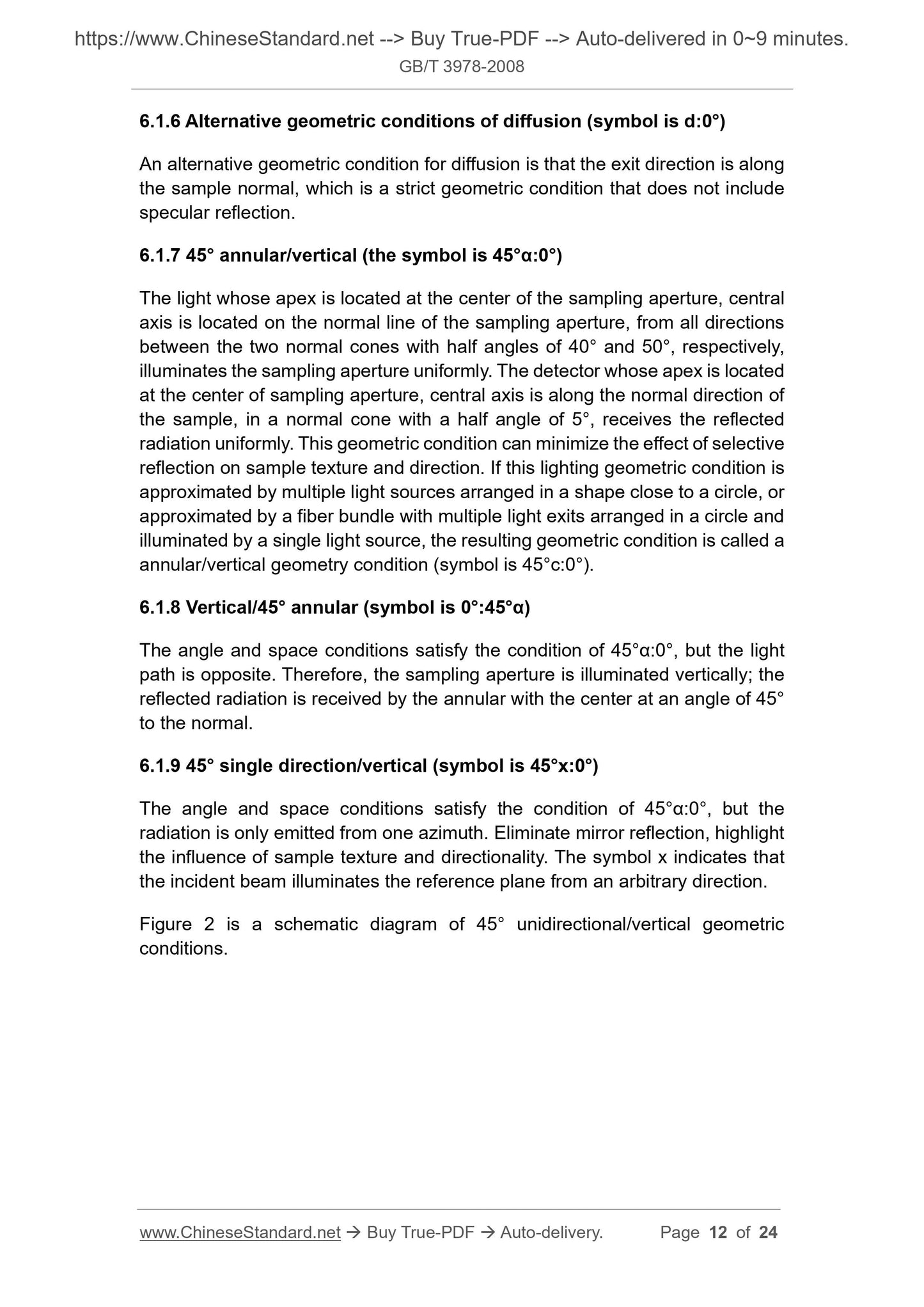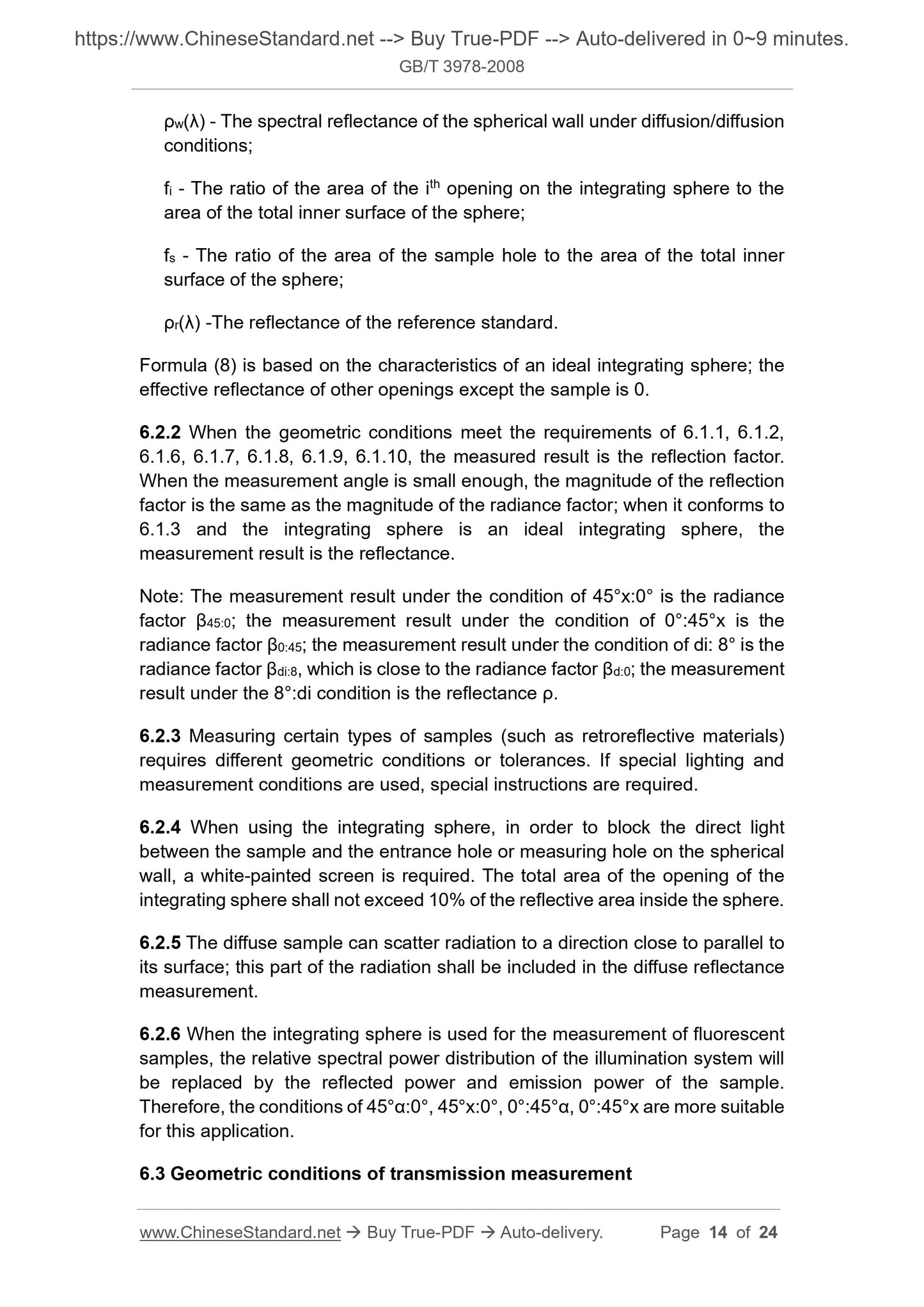1
/
of
8
www.ChineseStandard.us -- Field Test Asia Pte. Ltd.
GB/T 3978-2008 English PDF (GB/T3978-2008)
GB/T 3978-2008 English PDF (GB/T3978-2008)
Regular price
$270.00
Regular price
Sale price
$270.00
Unit price
/
per
Shipping calculated at checkout.
Couldn't load pickup availability
GB/T 3978-2008: Standard illuminants and geometric conditions
Delivery: 9 seconds. Download (and Email) true-PDF + Invoice.Get Quotation: Click GB/T 3978-2008 (Self-service in 1-minute)
Newer / historical versions: GB/T 3978-2008
Preview True-PDF
Scope
This standard specifies the geometric conditions of CIE standard illuminants incolorimetry, artificial light sources representing illuminants, color measuring
instruments.
This standard is applicable to the application and expression of illuminant and
geometric conditions in color measurement, calculation and evaluation.
Basic Data
| Standard ID | GB/T 3978-2008 (GB/T3978-2008) |
| Description (Translated English) | Standard illuminants and geometric conditions |
| Sector / Industry | National Standard (Recommended) |
| Classification of Chinese Standard | K70 |
| Classification of International Standard | 17.180.20 |
| Word Count Estimation | 16,134 |
| Date of Issue | 2008-06-26 |
| Date of Implementation | 2009-03-01 |
| Older Standard (superseded by this standard) | GB/T 3978-1994 |
| Quoted Standard | GB/T 5698 |
| Adopted Standard | CIE 15-2004, NEQ; CIE S005-1999, NEQ |
| Regulation (derived from) | Announcement of Newly Approved National Standards No. 10 of 2008 (total 123) |
| Issuing agency(ies) | General Administration of Quality Supervision, Inspection and Quarantine of the People's Republic of China, Standardization Administration of the People's Republic of China |
| Summary | This standard specifies the chromaticity of CIE standard illuminant, on behalf of illumination artificial light and color measurement instrument geometry. This standard applies to color measurement, calculation and evaluation of lighting and geometric conditions of application and presentation. |
Share
